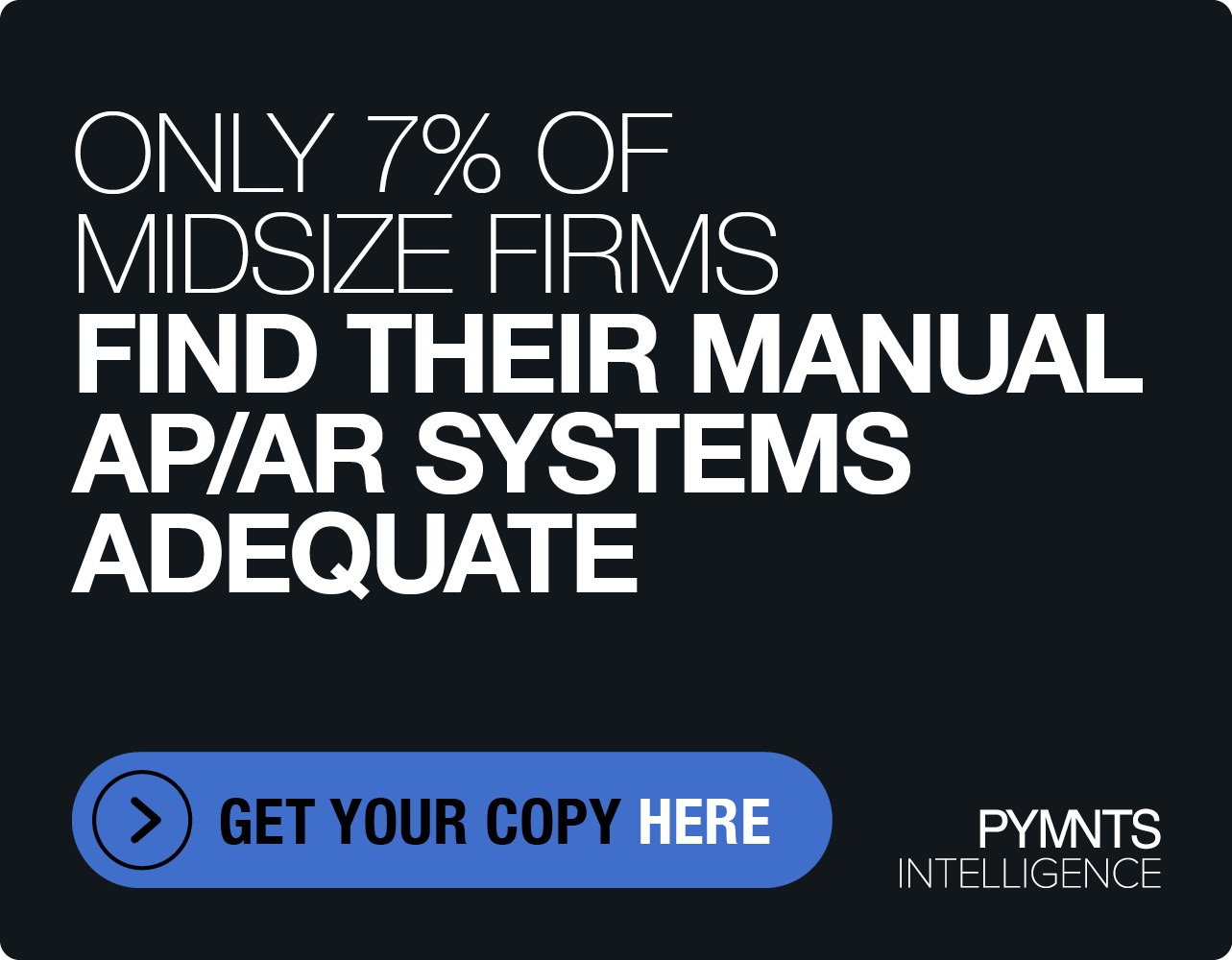Education, Embedded Finance Lead Modernization Trends in Business Payments

Cutting out the paper chase is not enough.
In the B2B realm, paper checks are still stubbornly entrenched in the payments landscape.
As many as 24% of B2B transactions are done with checks — and that’s from the largest corporates, with more than $1 billion in top lines. Roughly 50% of overall B2B payments come through checks.
But the movement to modernize B2B must go well beyond the confines of getting rid of the paper-based payments (although that is indeed a major trend). True payments modernization within B2B requires a holistic approach to workflows and interactions between buyers and suppliers — and ultimately, a spirit of collaboration that optimizes accounts payable (AP) and accounts receivable (AR).
PYMNTS own data, trackers and reports underscore the lack of efficiency. More than two-thirds of firms generating between $100 million to $500 million in annual sales saw payments delayed. And 80% of companies that have annual sales of $25 million to $100 million lack the resources needed to digitize their AR and AP systems. That lack of efficiency has major implications, given the fact that B2B payments are estimated to be $1 trillion annually.
Not surprisingly, there are several trends converging to lift B2B transactions more fully into the digital age. The benefits are tangible, as more than 60% of firms have said that digitizing AP/AR have helped them cut costs.
Read more: 62% of Companies Say Digitizing AR, AP Helped Cut Costs
Banking on Digital Optimization
Banks, increasingly, have been implementing and offering their corporate clients ways and means to streamline treasury and cash flow management. A PYMNTS’ study found that 31% of banks’ corporate clients cited a lack of payment options as a significant problem for their organizations.
Roughly half of banks are investing in application programming interfaces (APIs), which in turn can help automate the processes that have been manual in nature through the decades. Offering Banking-as-a-Service (BaaS) gives commercial clients a plug-and-play approach to addressing at least some of the operational inefficiencies that exist throughout the firm. In one notable statistic, as many as 73% of wholesale trade organizations have been using automated clearinghouse (ACH) payments.
See more: APIs to Drive Banking-as-a-Service Growth in 2022
Education Is Necessary
But investment cannot take place — certainly not on the part of the enterprises themselves — without the knowledge of what’s on offer to improve processes and how new technologies can be harnessed.
Thus, education is vital. PYMNTS has noted that 3% of chief financial officers (CFOs) said that digitizing AP and AR operations would “introduce options for payment that were not available before.”
Read more: Businesses Lack Knowledge About Modernized Payments Choices and Developments
Getting there is another story — but as providers continue to reach out to corporate clients, they are helping steer the great digital shift.
Virtual Cards Are in the Cards — Preapprovals Too
Upgrading the actual give and take between buyers and suppliers can come through virtual cards, complementing plastic ones wherever necessary.
Dan DeVall, vice president of business development at Airbase, told PYMNTS that 80% of buyer-supplier transactions could be completed electronically by 2025.
See more: Virtual Cards Become Swiss Army Knife of Spend Management in a Work-From-Home World
But B2B transactions themselves have become commoditized, and the adoption of electronic payments must come with something more compelling than the reduction of the transactional cost itself.
Corporate cards, especially virtual corporate ones, give employees the right tools to buy what they need to get their jobs done — right at the time those expenses become critical, DeVall said.
For the employees themselves — the ones out in the field, so to speak — preapprovals across platforms (with the benefit of spend management software) are critical.
Embedded Finance
As software and integrated payments become the norm in B2C, the practice is spilling over in B2B.
PYMNTS data found that 42% of companies surveyed reported a lack of supplier portals — typically third-party platforms that enable them to connect online with their suppliers or vendors — as a pain point in their B2B payment processes, with 15% citing this gap as the most significant frustration they faced. Implementing embedded finance could enable businesses to offer their suppliers easier access to digital payments.
Read more: How Embedded Finance Can Help Businesses Streamline Their B2B Payment Processes and Stay Competitive
